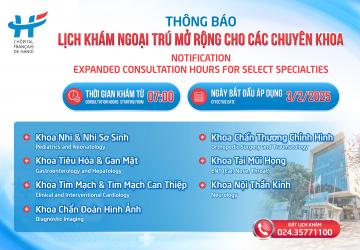Knowledge - Fri, 12/06/2024 - 11:10
Treatment of kidney stones, ureteral stones by Percutaneous Nephrolithotomy technique
Last update 12/06/2024 - 11:12

Percutaneous Nephrolithotomy (PCNL) is a special endoscopic technique for kidney stones and upper ureteral stones. After the patient is given general anesthesia, the surgeon inserts a needle to do the kidney‘s puncture. The needle tunnel will be enlarged by dilatator to have the size of a pencil, thereby allowing the nephroscope pass through. Stones are then broken up into fragments and extracted out accordingly. At the end of the operation, the surgeon places a nephrostomy through the tunnel to take care of the post operative radiology and will be removed in 24 – 48 hours.
In some cases, Extracorporeal Shock Wave Lithotripsy (ESWL) may be applied as a supplement procedure to treat the residual stone fragments.
Indications
PCNL is determined depending on radio - imagery. UIV is the first choice for diagnosing, it allows the doctor know exactly the size, shape, position and especially morphologic anatomy of renal calyx and renal parenchyma. In case of necessity, doctors may ask the patient to do CT Scan or ultrasound during operation.
PCNL procedure is applied to:
- Kidney stones greater than 2cm in size, including complicated coral stones.
- Contraindication of ESWL.
- Had failure with ESWL.
PCNL is not used in the patients with disorder of coagulation, or those suffering from abnormal vessel kidney may get risk of important hemorrhage. Even with high blood pressure cases, the only contraindication is temporary.
Advantages of PCNL
- Mini – invasive operation, less pain, short hospital stay (3 or 4 days), quick recovery and early return to work (7 to 10 days)
- Avoid a surgical scar, meaning that avoids the complications of a large incision to remove the kidney stone.
- Limit residual stone. This is the special advantage of PCNL over other intervention due to its possibility to look inside the ureter and renal calyx to check which may not always be done by open operation and ESWL procedure.
- Minimize the occurrence of postoperative infections (compared with open surgery).
- Less harm to the kidney function (the influence of PCNL on kidney function is smaller than 1% while open surgery may cause the loss of 30% kidney function due to the incision made on renal parenchyma).
Postoperative Care
Patient will probably walk around the room and have light food the day after operation. On the second day, pyelography will be performed to ensure the free stone situation and ureteral permeability. And then nephrostomy will be removed.
After the removal of nephrostomy, the urinary leakage from nephrostomy orifice may be present. However it normally disappears in 3 or 6 hours thanks to compression bandage.
Patient suffers less pain after operation as it helps avoid large incision on the kidney made by open surgery.
This surgery usually involves a 3 to 4 day hospital stay. Patient is able to return to work within 7 to 10 days without taking special care. During this time, patient should drink from 1.5 to 2 litres of water per day.
After discharge, patient is required to pay follow up visit with the surgeon to determine if any residual stone fragments and the additional treatment may be necessary.
Imagery should be taken annually to check for possible recurrence of kidney stones. In the cases that kidney stones appear as the consequences of other disease further diagnosis and treatment are recommended.
Possible Risks and Complications
- Hemorrhage may occur in about 1.5 to 2% of patients with big stones involving more than one session and especially those with abnormal kidney. However, this is easily controlled by the use of nephrostomy with compressive balloon.
- Pyelic perforation is possible and will treat by keeping the nephroscopy a few days more.
- Perforation of colon and perforation of the pleura are rare because the procedure is usually performed under the Xray and ultrasound guidance.
Staghorn calculus may require second PCNL on the same position or another calice. This procedure can be done once again at the same time or 2 or 3 days later. In this case, hospitalization’s time estimate about 7 or 8 days.
Overall, with the advantages of PCNL, we can hope that this technique can replace most cases of kidney stones having indicated normal operation. It helps achieve guidelines: “STONE FREE – LESS PAIN – QUICK RECOVERY”
It is shown that Percutaneous nephrolithotomy technique brings satisfactory result, less complications, short hospitalization and early return to work. If the internet and information technology explosion create new concepts of the intellectual economy, the revolution of endoscopic surgery technique with high technology equipment in general and percutaneous nephrolithotomy in particular may be seen as an example.
For further information about this method, please contact us at: (84-24) 3577 1100 or send us an inquiry here



